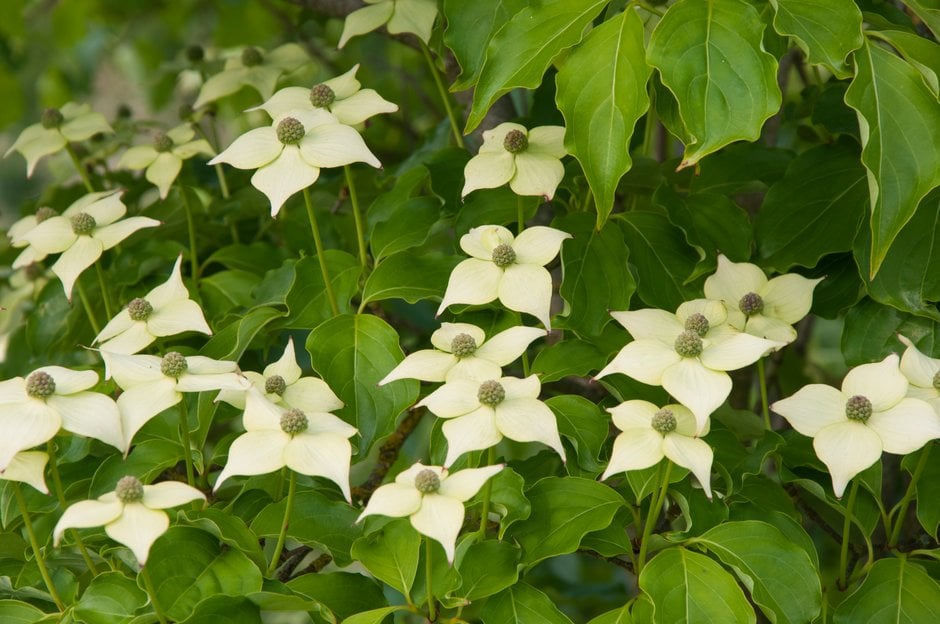Cornus florida
flowering dogwood
A small tree or large shrub with large, broadly oval, mid-green leaves that turn red and purple in autumn. In late spring, clusters of small, green flowers are surrounded by conspicuous white or pink bracts, followed by rounded, orange-red fruit
Size
Ultimate height
4–8 metresTime to ultimate height
20–50 yearsUltimate spread
4–8 metresGrowing conditions
Moisture
Moist but well–drained, Well–drainedpH
Acid, NeutralColour & scent
| Stem | Flower | Foliage | Fruit | |
| Spring | Green Pink White | Green | ||
|---|---|---|---|---|
| Summer | Green | |||
| Autumn | Purple Red | Red | ||
| Winter |
Position
- Full sun
- Partial shade
Aspect
South–facing or West–facing or East–facing
Exposure
Exposed or Sheltered Hardiness
H5Botanical details
- Family
- Cornaceae
- Native to GB / Ireland
- No
- Foliage
- Deciduous
- Habit
- Bushy
- Genus
Cornus can be deciduous shrubs or trees, or creeping, woody-based perennials, some with brightly coloured young stems. Tiny flowers are borne in dense clusters, sometimes with showy bracts. Many have fine autumn colour
- Name status
Correct
- Plant range
- E Canada, E USA, Mexico
How to grow
Cultivation
Grow in fertile, well-drained, neutral to acid soil in sun or partial shade. Keep roots cool with a mulch in summer and provide shelter in exposed locations. For more advice, see flowering dogwood cultivation
Propagation
Propagate by softwood cuttings in summer
Suggested planting locations and garden types
- Cottage and informal garden
- Low Maintenance
Pruning
Pests
Generally pest-free but may be susceptible to horse chestnut scale
Diseases
May be susceptible to cornus anthracnose and honey fungus
Get involved
The Royal Horticultural Society is the UK’s leading gardening charity. We aim to enrich everyone’s life through plants, and make the UK a greener and more beautiful place.
